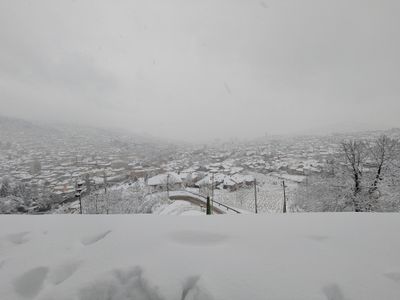
Introduction
During a week spent amidst the snow-covered streets, warm people, and delightful flavors of Bosnia and Herzegovina, I explored Sarajevo and Mostar in winter. This trip focused on:
- Immersing in the blend of Ottoman and Austro-Hungarian cultures
- Discovering winter-specific experiences
- Sampling authentic Bosnian cuisine
- Understanding the country's complex history
Planning & Logistics
When to Visit
Winter offers:
- Fewer crowds
- Snow-covered landscapes
- Lower prices
- Unique winter cuisine
Getting There
- Direct flights to Sarajevo from major European cities
- Bus connections from neighboring countries
- Visa-free for most Western passports
Budget
- Average daily cost: 50-70 BAM (25-35€)
- Budget tips: Stay in guesthouses, eat at esnaf lokantası
Places to Visit
Sarajevo
Must-See Attractions
- Baščaršija (Old Bazaar): Heart of Ottoman Sarajevo with artisan shops and cafes
- Latin Bridge: Site of the assassination that started WWI
- Gazi Husrev-beg Mosque: 16th century Ottoman complex
Hidden Gems
- Morica Han: Historic inn with traditional coffee house
- Sarajevo War Tunnel Museum: Insight into the siege
Mostar
Must-See Attractions
- Stari Most (Old Bridge): Iconic UNESCO-listed bridge
- Old Town: Ottoman-era streets and shops
Food & Drink
Local Specialties
- Burek: Flaky meat-filled pastry
- Ćevapi: Grilled minced meat sausages
- Klepe: Bosnian dumplings
Best Restaurants
- Inat Kuća: Traditional dishes with modern presentation
- Buregdžinica Bosna: Authentic pita pastries
Practical Tips
Transportation
- Walkable city centers
- Affordable trams in Sarajevo
- Buses between cities
Money
- ATMs widely available
- Credit cards accepted in most places
- Small bills useful for markets
Personal Reflections
The blend of cultures, resilient people, and delicious food made Bosnia a memorable winter destination. The complex history adds depth to every experience, from drinking coffee in Baščaršija to walking across Stari Most.